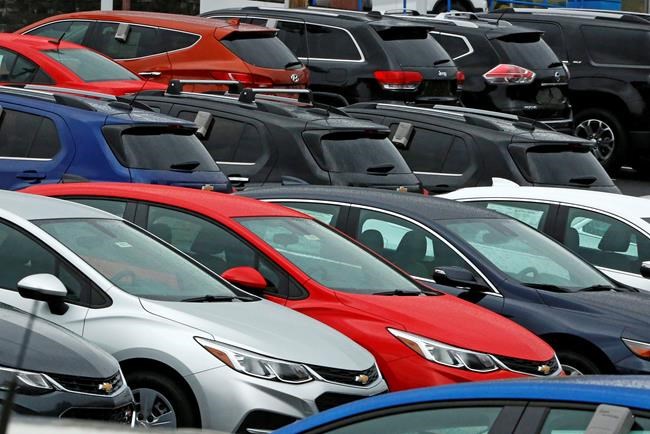US consumer spending flat for second month in March

WASHINGTON – U.S. consumers cut back sharply on buying durable goods such as autos in March, leaving overall spending unchanged for a second straight month. A slowdown by consumers was a major reason overall economic growth slowed so sharply over the winter.
Consumer spending was unchanged in March after also being flat in February and posting only a modest rise of 0.2 per cent in January, the Commerce Department reported Monday. For the January-March quarter, the sharp slowdown in consumer spending was a key reason growth, as measured by the gross domestic product, slowed to an annual rate of just 0.7 per cent, the poorest performance in three years.
Economists believe growth will bounce back in the current April-June period, helped by continued strong job gains, rising wages and increased consumer confidence. Many analysts are looking for a second quarter surge to growth of 3 per cent or better and they are forecasting growth for the entire year of around 2.3 per cent, up from 1.6 per cent GDP growth in 2016, the poorest showing in five years.
Analysts believe the bounce back in the current quarter will be helped by job gains, rising wages and increased consumer confidence. But the poor first-quarter performance underscored the challenge President Donald Trump faces in lifting economic growth, which has lagged over the nearly eight years of this economic expansion, the slowest in the post-war period.
Trump promised during the campaign to double economic growth to 4 per cent or better through a combination of tax cuts for individuals and businesses, deregulation and tougher enforcement of America’s trade deals. But economists believe that Trump’s growth goal will be hard to achieve given the headwinds the economy faces, with an aging workforce and scant gains in recent productivity.
The March spending report showed that incomes grew a modest 0.2 per cent after stronger increases of 0.3 per cent in February and 0.4 per cent in January. The combination of weak spending growth and stronger income growth pushed the saving rate to 5.9 per cent of after-tax income in March, up from 5.7 per cent in February.
A key inflation gauge closely watched by the Federal Reserve showed a 0.2 per cent decline in March while core inflation, which excludes food and energy, fell 0.1 per cent, the first decline since September 2001. For the 12 months ending in March, core inflation has risen 1.6 per cent, down from a 1.8 per cent increase in February. That performance represented a small setback for the Fed’s goal of getting inflation back to annual increases of 2 per cent.
Fed officials meet this week but economists are not looking for the central bank to raise interest rates.
Paul Ashworth, chief U.S. economist at Capital Economics, said he did not believe the March reading on inflation would deter the Federal Open Market Committee from raising rates at the meeting next month.
“We don’t expect that will prevent the Fed from hiking interest rates again at the June … meeting, at least not as long as employment growth rebounds in April and May,” Ashworth said.
Join the Conversation!
Want to share your thoughts, add context, or connect with others in your community?
You must be logged in to post a comment.
















